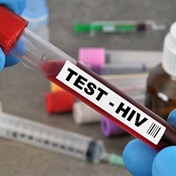These and other powerful weapons could be deployed in the war against the human immunodeficiency virus (HIV) in as few as one to five years - but only if they first overcome a daunting array of obstacles, they cautioned.
"Very soon, we could have new, highly effective ways to prevent many of the four million new HIV infections that occur each year," said Helene Gayle, co-chair of the Global HIV Prevention Working Group, a panel of 50 top specialists who compiled the report.
"But these tools will have little impact in the real world unless we take immediate steps to complete current trials, mount new ones, and reach people most in need."
The study, entitled "New Approaches to HIV Prevention: Accelerating Research and Ensuring Future Access," highlighted the tragic failure to brake the march of Aids, which first emerged 25 years ago and has now claimed 25 million lives.
Millions newly infected
Nearly 39 million people are living with AIDS or its cause, HIV. Last year, 4.1 million became newly infected.
There is no cure for Aids, only antiretroviral drugs that suppress levels of HIV to a manageable level. The search for a vaccine has similarly born no fruit.
That leaves prevention almost entirely dependent on the condom or sexual abstinence - tactics that are notorious for being unreliable or unworkable, especially in cultures of male dominance.
Promising new methods
Against this dispiriting backdrop, the research panel, launched with the help of philanthropists Bill and Melinda Gates, highlighted six promising new methods of prevention:
- Male circumcision: Evidence is emerging that circumcision can help protect men from HIV during sexual intercourse, although exactly why this is so, is unclear.
- Cervical barriers, such as diaphragms. These cover the top part of the vagina, where the tissue wall is thin and prey to tiny lesions during intercouse that help HIV to enter the bloodstream.
- Daily use of antiretroviral drugs, which thus reduces the amount of Aids virus to which a sex partner is exposed.
- Assaulting herpes, a sexually-transmitted virus that again causes lesions, again enabling HIV to enter the body. It can triple the risk of contracting the Aids pathogen.
- Microbicide, a gel that a woman could insert in her vagina, like spermicide creams today, that would block or kill HIV in semen. Five promising prototype gels are in human trials to test whether they are safe and effective. In the lead is a formula called Carraguard. Its trials end in December 2007, which means that, if all goes well, it could be available in 2009, according to the International Partnership for Microbicides (IPM).
- Preventative HIV vaccines, a vital but long-term quest that most scientists say remains years away, if it is achievable.
Predictably, money - lots of it - will be needed. Some of it will be needed for research and development to prove that these methods work, to understand why this is so, and how the tools can be best used.
But huge funds will be needed to help developing countries, which are worst-hit by Aids, to purchase new prevention tools, train health workers and launch campaigns to woo the public.
One risk is that these preventative, partially-effective tools may cause complacency, prompting some to engage in high-risk sexual behaviour. - AFP




 Publications
Publications
 Partners
Partners














